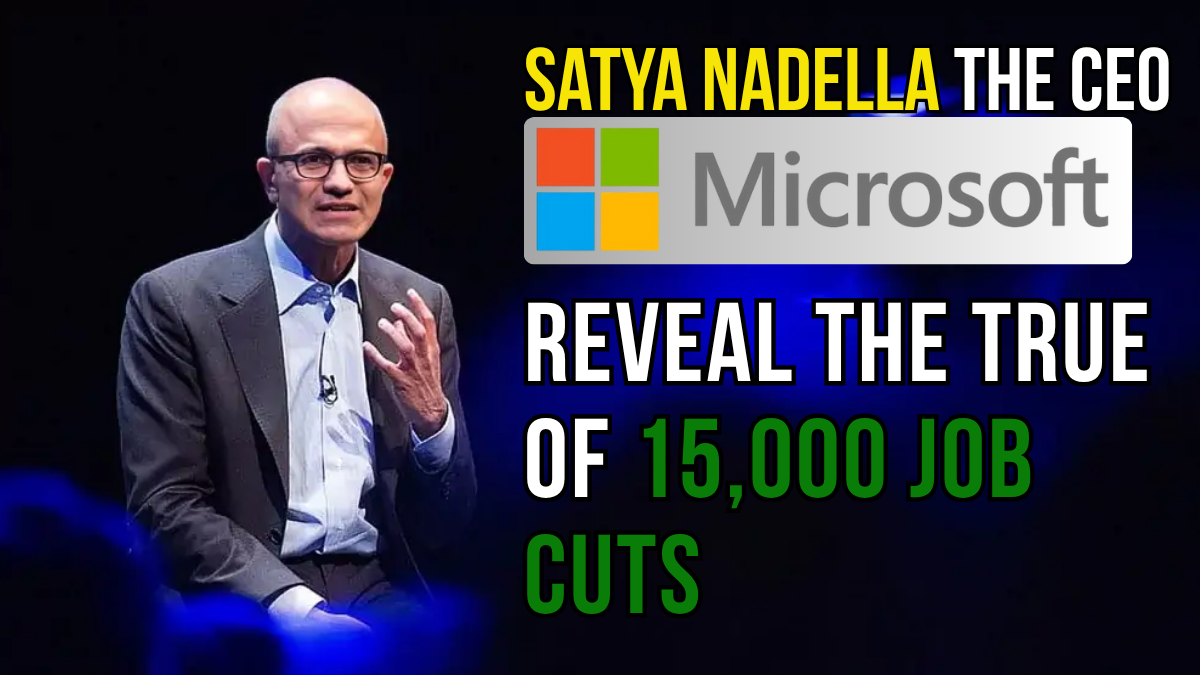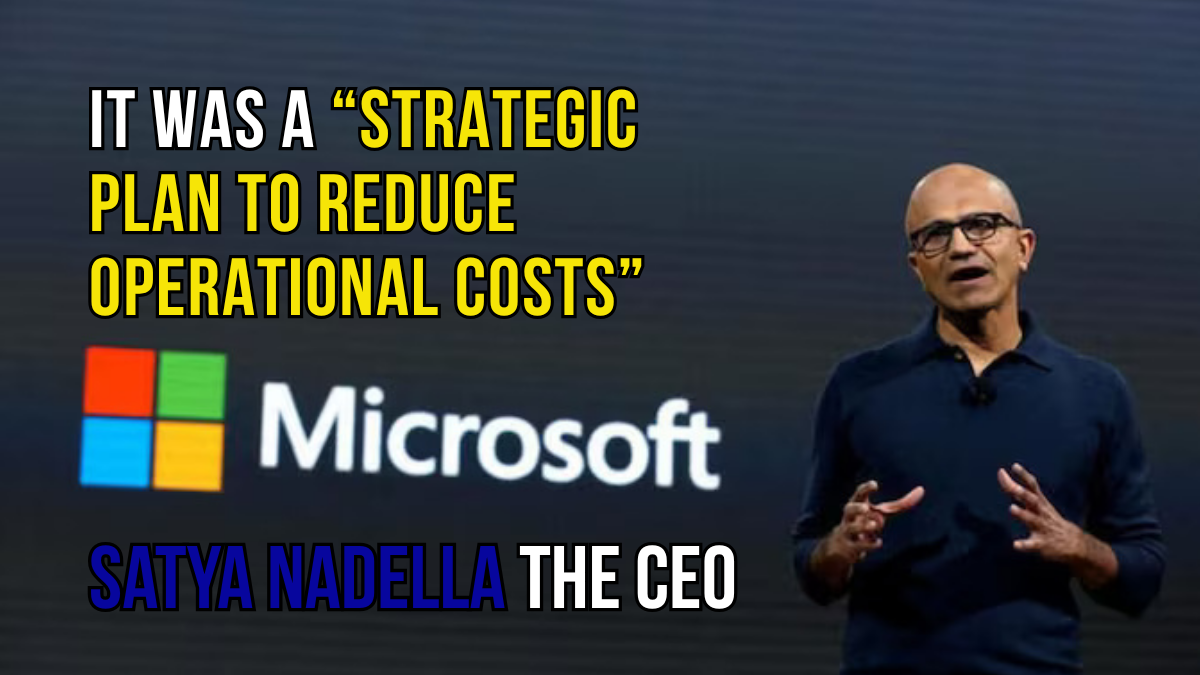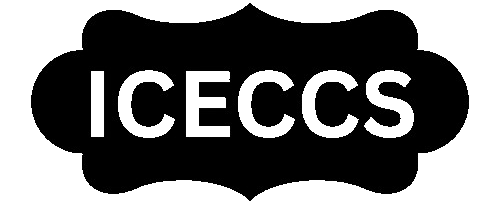Microsoft’s recent wave of layoffs sends shockwaves through the tech industry, raising critical questions about the human price of artificial intelligence transformation. When CEO Satya Nadella admits the company’s AI shift feels “messy,” it exposes a harsh reality many organizations face: innovation often comes at a steep human cost.
The tech giant eliminated approximately 15,000 roles in 2025, with 9,000 cuts occurring in early July alone. These weren’t just numbers on a spreadsheet they represented real people whose careers were upended in service of Microsoft’s aggressive AI ambitions. Despite maintaining what Nadella calls a “basically flat” headcount of 228,000 employees as of June 2024, the emotional toll on remaining workers has been significant.

What makes Microsoft’s situation particularly striking is the contradiction at its core. The company reported $245 billion in annual revenue for fiscal 2024, marking a 16% year-over-year increase. Microsoft stock closed above $500 for the first time on July 9, just a week after announcing the latest round of layoffs. This financial success, coupled with massive job cuts, illustrates what Nadella describes as “the enigma of success in an industry that has no franchise value.”
Understanding how Microsoft navigated this transformation and the lessons other organizations can learn reveals important insights about the future of work during the AI revolution.
The Strategic Reality Behind Microsoft’s AI Transformation
Microsoft’s layoffs weren’t random cost-cutting measures. They represented a calculated restructuring aimed at positioning the company as an “intelligence engine” rather than a traditional software factory. The affected divisions included cloud services, sales, support teams, and even some AI-adjacent roles, signaling a fundamental shift in how the company operates.
The strategy centers on Microsoft’s massive investments in AI infrastructure. The company has poured billions into platforms like Azure AI, Copilot, and its strategic partnership with OpenAI. These investments require immediate returns to satisfy investors concerned about the scale and pace of AI spending across the tech industry.
Azure, Microsoft’s cloud computing arm, has experienced accelerated growth as AI companies scramble for access to Nvidia chips needed to train and run large language models. This demand has created new revenue streams, but it has also required the company to reallocate human resources toward high-priority growth areas.
The restructuring affected employees across multiple geographies and business units. Sales teams, support staff, and workers in overlapping product lines bore the brunt of the cuts. Meanwhile, remaining employees underwent intensive retraining on Copilot, Azure AI tools, and AI-driven software development processes.
Industry-Wide Implications of AI-Driven Restructuring
Microsoft’s approach reflects a broader trend across the technology sector. More than 80,000 positions have been eliminated industry-wide in 2025, as companies recalibrate their workforce for an AI-first world. Companies like Scale AI, Amazon, Salesforce, and Duolingo have all announced significant layoffs tied to AI adoption and operational restructuring.
The pattern reveals several common themes. First, companies are eliminating roles that AI can potentially automate or augment. Second, they’re consolidating teams to reduce management layers and increase operational efficiency. Third, they’re reallocating resources toward AI development and implementation.
Recruit Holdings, which operates Indeed and Glassdoor, recently announced plans to cut 1,300 roles in its HR technology division, with leadership pointing directly to artificial intelligence as the catalyst. This demonstrates how AI isn’t just changing how companies operate internally it’s reshaping entire industries and job markets.
The speed of these changes has created anxiety among workers who remain. Current and former Microsoft employees report concerns about constant organizational shifts, evolving priorities, and uncertainty about job security in increasingly automated workflows.
The Human Cost of Technological Progress

Beyond the financial metrics and strategic positioning lies a more complex story about the human impact of rapid technological change. Nadella’s admission that the transformation feels “messy” acknowledges something many tech leaders prefer to avoid discussing: innovation often requires difficult trade-offs.
The emotional toll on Microsoft’s workforce extends beyond those who lost their jobs. Remaining employees face increased pressure to adapt to new tools, processes, and performance expectations. The company has implemented comprehensive training programs, but the pace of change has left many workers feeling overwhelmed.
This situation highlights a fundamental challenge facing organizations undergoing AI transformation. While the technology promises increased productivity and new capabilities, the transition period can be disruptive and demoralizing for human workers. Companies must balance the pursuit of innovation with their responsibility to employees and communities.
The scale of Microsoft’s restructuring also raises questions about whether organizations can maintain company culture and employee engagement during periods of rapid change. When job security becomes uncertain and organizational structures shift frequently, maintaining morale and productivity becomes increasingly difficult.
Lessons for Organizations Navigating AI Adoption
Microsoft’s experience offers valuable insights for other organizations considering AI adoption and workforce restructuring. The company’s approach demonstrates both the potential benefits and pitfalls of aggressive AI implementation.
Transparent Communication Matters: Nadella’s honest acknowledgment of the difficulties Microsoft faces shows the importance of authentic leadership during periods of change. Rather than presenting a sanitized corporate message, his willingness to admit the transformation feels “messy” may help build trust with remaining employees.
Strategic Clarity Reduces Anxiety: Organizations need clear communication about their AI strategy and how it affects different roles and departments. Microsoft’s explanation that layoffs aimed to “refocus talent and resources on high-priority growth areas” provides context, even if employees disagree with the decision.
Investment in Retraining Is Essential: Companies cannot simply eliminate roles and expect remaining workers to adapt automatically. Microsoft’s intensive training programs on Copilot and Azure AI tools demonstrate the need for substantial investment in employee development during AI transitions.
Timing and Pace Matter: The speed of Microsoft’s transformation created additional stress for employees. Organizations might benefit from more gradual implementation that allows workers time to adapt and develop new skills.
Redefining Corporate Mission for the AI Era
Nadella’s call to “reimagine Microsoft’s mission” reflects a broader challenge organizations face when adopting AI. Traditional business models and operational approaches may no longer be sufficient in an AI-driven marketplace.
Microsoft’s evolution from “empowering every person and organization on the planet to achieve more” to becoming an “intelligence engine” represents more than a marketing shift. It reflects a fundamental change in how the company views its role in the technology ecosystem.
This transformation involves moving beyond creating specific tools for particular tasks toward building platforms that enable users to create their own solutions. As Nadella explained, the goal is helping people “summon a researcher, an analyst, or a coding agent at their fingertips” to accomplish tasks that benefit them directly.
For other organizations, this suggests the need to reconsider core business propositions in light of AI capabilities. Companies may need to shift from providing fixed products or services toward offering adaptable platforms that leverage AI to meet diverse customer needs.
Looking Ahead: Balancing Innovation and Responsibility
Microsoft’s experience illuminates the complex challenges organizations face when implementing AI at scale. The company’s financial success, combined with significant workforce disruption, illustrates the tension between technological progress and human impact.
The tech industry’s approach to AI adoption will likely influence how other sectors navigate similar transformations. If companies can demonstrate that AI implementation can occur without massive job losses, it may ease public concerns about artificial intelligence. However, if Microsoft’s pattern becomes the norm, it could fuel resistance to AI adoption and calls for regulatory intervention.
Organizations planning AI implementation should consider both the strategic opportunities and the human costs. While AI can drive innovation and efficiency, the transition requires careful management to maintain employee trust and social responsibility.
The question isn’t whether AI will transform how we work that transformation is already underway. The question is whether organizations can manage that change in ways that benefit both business objectives and the people who make success possible.
Microsoft’s journey through AI transformation offers a realistic look at what lies ahead for organizations across industries. The path may indeed be “messy,” as Nadella acknowledges, but the lessons learned from Microsoft’s experience can help other companies navigate their own AI adoption more thoughtfully and effectively.
FAQs: Frequently Asked Questions
Q1. Why did Microsoft cut 15,000 jobs during its AI transformation?
A1. The layoffs were part of Microsoft’s strategic restructuring to align resources with its AI-driven vision. By reallocating investments and focusing on rapidly growing areas of AI innovation, the company aimed to streamline operations and remain competitive.
Q2. How has AI impacted Microsoft’s business model?
A2. AI has become a central pillar of Microsoft’s strategy, transforming its product offerings, customer experiences, and internal operations. From integrating AI into tools like Azure and Office 365 to developing cutting-edge AI applications, the company is leveraging AI to shape its future business model.
Q3. What can other organizations learn from Microsoft’s AI transformation?
A3. Organizations can learn to anticipate challenges such as workforce shifts and the need for upskilling. Microsoft’s experience highlights the importance of staying flexible, investing in innovation, and addressing cultural and operational adjustments during an AI-driven transformation.
Q4. Will AI lead to more job cuts in other industries?
A4. While AI can automate certain roles, it also creates opportunities for new positions and skills. The transition might lead to temporary disruptions, but companies focusing on reskilling their workforce can foster long-term growth and stability.
Q5. How can businesses adopt AI responsibly?
A5. Companies should prioritize thoughtful implementation by considering ethical implications, ensuring transparency, and investing in employee reskilling. Microsoft’s experience shows that a clear strategy and commitment to responsible AI adoption are key to achieving sustainable success.
For More Information Click HERE
